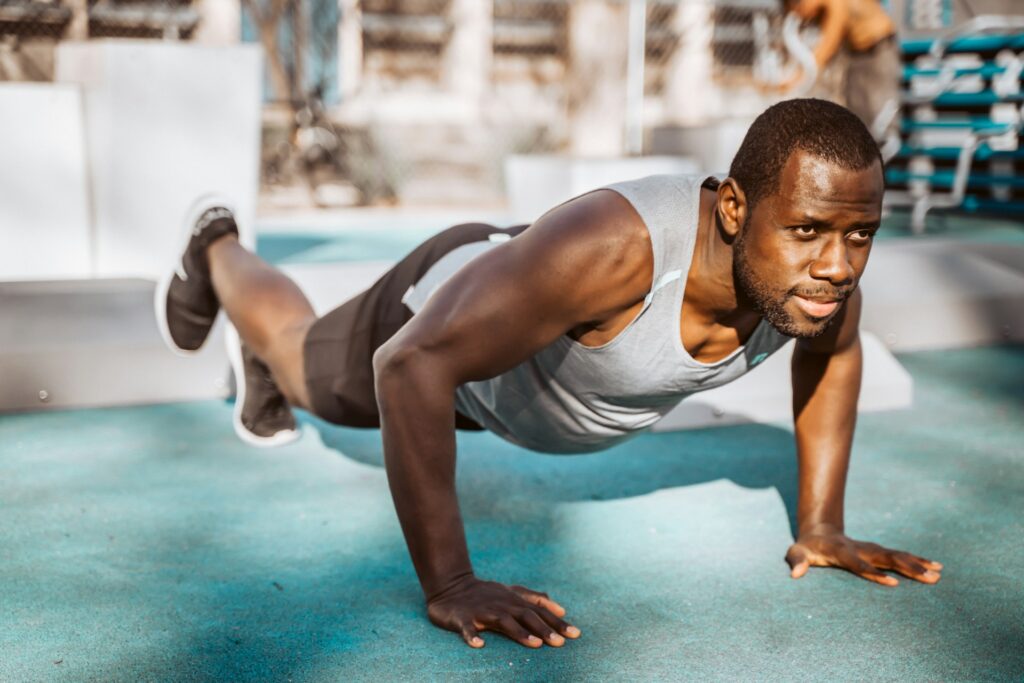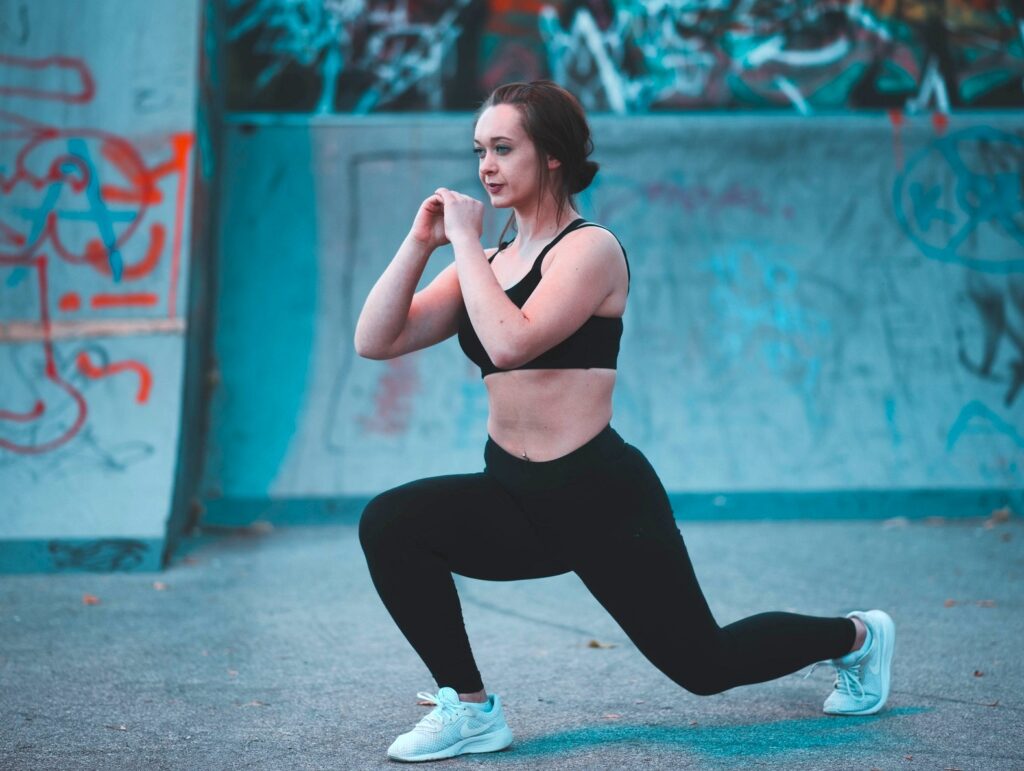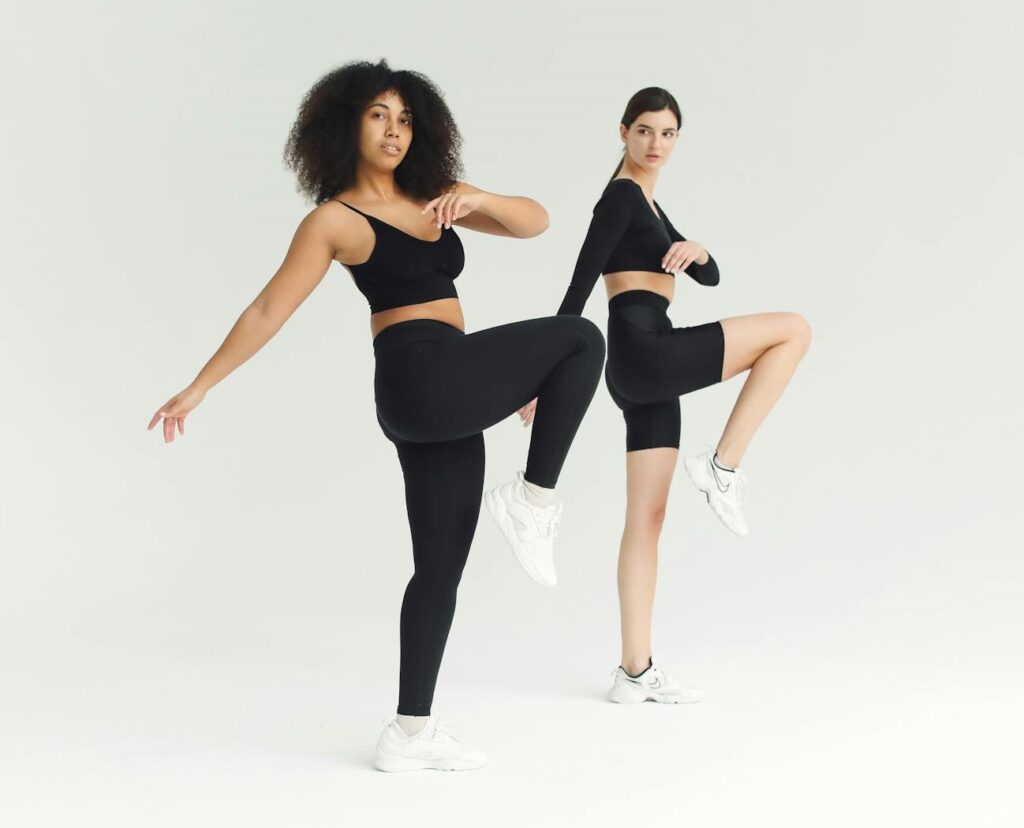Low-intensity high-impact training (LIHIT) is hot. It’s a workout system that focuses on performing exercises at a low intensity but with high impact on burning calories. It typically involves short bursts of intense activity followed by longer periods of rest or low-intensity exercise. LIHIT workouts are designed to maximize calorie burn, improve cardiovascular fitness, and build muscle endurance without putting excessive stress on your muscles and joints. Workouts often incorporate elements of high-intensity interval training (HIIT) but at a lower intensity level and can include bodyweight movements, resistance training, plyometrics, and cardio exercises like cycling or rowing.
Let’s explore low-intensity high-impact training.
BENEFITS OF LOW-INTENSITY HIGH-IMPACT TRAINING
Efficient calorie burning: The high-impact nature of the exercises can help burn calories both during and after the workout, aiding in weight loss and fat burning.
Improved cardiovascular health: LIHIT workouts challenge the cardiovascular system, leading to improved heart health and endurance.
Muscle endurance and strength: The repetitive nature of the exercises helps build muscle endurance and can also contribute to strength gains, especially when combined with resistance training.
Reduced risk of injury: Compared to high-intensity workouts, LIHIT training puts less strain on the joints and muscles, reducing the risk of injury while still providing effective results.
Time-efficient: LIHIT workouts are often shorter in duration compared to traditional (non-HIIT) cardio sessions, making them ideal for individuals with busy schedules.

However, it’s essential to listen to your body and adjust the intensity and duration of LIHIT workouts based on your fitness level and any existing health conditions.
SAMPLE BODYWEIGHT LIHIT WORKOUT
This is a sample low-intensity high-impact training (LIHIT) circuit routine that uses only your bodyweight for resistance, so you can do it anywhere.
◼️ Adjust the intensity and duration of each exercise based on your fitness level and preferences.
◼️ Perform each exercise for 30 seconds, followed by 30 seconds of rest.
◼️ Complete the circuit 2-3 times, resting for 1-2 minutes between circuits.
Bodyweight Squats
Stand with feet shoulder-width apart. Lower your body by bending your knees and pushing your hips back. Keep your chest up and back straight. Return to the starting position by pushing through your heels. Repeat for 30 seconds.
Push-Ups
Start in a plank position with hands slightly wider than shoulder-width apart. Lower your body until your chest nearly touches the ground. Keep your core engaged and back straight. Push back up to the starting position. Repeat for 30 seconds.
Jumping Lunges
Start in a lunge position with one foot forward and one foot back. Lower your body into a lunge. Explosively jump into the air, switching legs mid-air. Land softly in a lunge position with the opposite leg forward. Repeat for 30 seconds.

Mountain Climbers
Start in a plank position with hands directly under shoulders. Drive one knee toward your chest, then quickly switch legs. Keep your core engaged and maintain a fast pace. Repeat for 30 seconds.
High Knees
Stand with feet hip-width apart. Lift your knees towards your chest as high as possible while pumping your arms. Maintain a fast pace. Repeat for 30 seconds.
Remember to listen to your body and modify the exercises as needed. As you progress, you can increase the duration or intensity of each exercise or add more challenging variations. Always prioritize proper form and technique to prevent injury and maximize results.
LIHIT CALORIE BURN
The number of calories burned during exercise varies based on factors such as age, weight, gender, fitness level, and intensity of the workout. Additionally, estimating calorie expenditure for a specific workout like the LIHIT routine provided earlier can be challenging without more detailed information.
However, as a rough estimate, a 30-minute LIHIT workout similar to the one outlined above could burn anywhere from 200 to 400 calories for an average-sized adult, depending on factors such as intensity and individual metabolism.
Keep in mind that this is just an estimate, and the actual calorie burn may vary. To get a more accurate idea of your calorie expenditure during exercise, you can use fitness trackers or heart rate monitors that calculate calorie burn based on your personal data and exercise intensity.
LIHIT VS. HIIT
Comparing low-intensity high-impact training (LIHIT) to high-intensity interval training (HIIT) involves looking at various factors, including calorie burn, intensity, and potential benefits.
Calorie Burn
LIHIT: LIHIT typically involves exercises performed at a lower intensity but with high impact, leading to a moderate calorie burn. In a 30-minute LIHIT workout, an average-sized adult may burn around 200 to 400 calories, depending on factors like intensity and individual metabolism.
HIIT: HIIT involves short bursts of intense exercise followed by periods of rest or lower-intensity activity. Due to the high intensity and metabolic demand, HIIT workouts often result in about a 50% higher calorie burn compared to LIHIT. In a 30-minute HIIT session, an average-sized adult may burn around 300 to 600 calories or more, depending on factors like exercise intensity and duration.
Intensity
LIHIT: LIHIT workouts are characterized by their lower intensity compared to HIIT. While still challenging, LIHIT exercises are performed at a level that allows participants to sustain the activity for longer periods without reaching maximal effort. If you have trouble catching your breath, your intensity is too high.
HIIT: HIIT workouts are known for their high intensity, with participants exerting near-maximal effort during the intense intervals. These intervals are typically followed by short periods of rest or lower-intensity activity to allow for recovery before the next high-intensity interval.

Potential Benefits
LIHIT: LIHIT workouts can improve cardiovascular health, muscle endurance, and calorie burn while placing less stress on the body compared to HIIT. They are suitable for individuals looking for effective workouts with a lower risk of injury or for those who may not be able to sustain the high intensity of HIIT.
HIIT: HIIT is known for its efficiency in burning calories, improving cardiovascular fitness, and boosting metabolism. It can also lead to significant improvements in aerobic and anaerobic capacity, muscle strength, and insulin sensitivity. However, the high intensity of HIIT may not be suitable for everyone, especially those with certain health conditions or fitness limitations.
Ultimately, both LIHIT and HIIT offer effective ways to improve fitness and burn calories, but the choice between them depends on individual preferences, fitness goals, and considerations such as fitness level and health status. It’s essential to choose the workout style that aligns best with your needs and abilities while ensuring proper form and safety during exercise.
LOW-INTENSITY HIGH-IMPACT TRAINING: CONCLUSION
We’re big fans of HIIT as a time-effective calorie burn, but its level of intensity is not for everyone. Give LIHIT a try, either as an alternative to HIIT or as an occasional way of backing off the intensity while continuing to burn calories.

















































